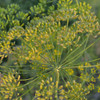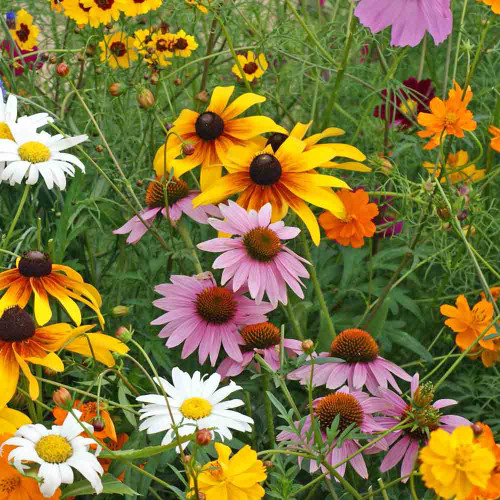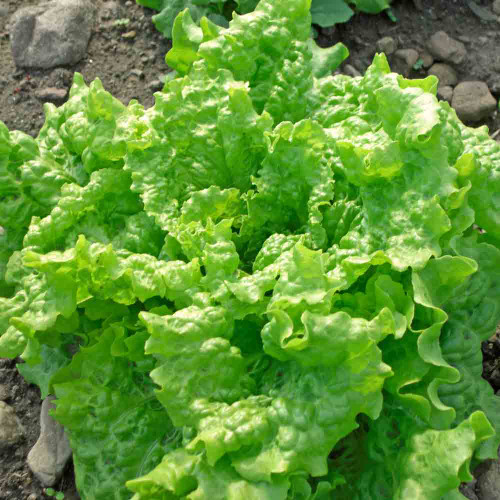Description
Dukat Dill - Explore the Rich History and Versatile Uses
Dukat dill rewards the gardener and cook with a delightful combination of beauty, flavor, and versatility. While many varieties of dill are available, Dukat’s ease of growing makes it an exceptional choice for any garden, regardless of the experience level. Its compact size is suited for small gardens or containers, and late blooming extends the harvest season. You'll be rewarded with fresh, flavorful dill to enhance your dishes and a thriving garden.
Details
Dill plants typically grow 2-3 feet tall and 1½-2 feet wide. Dukat dill is known for its lush, blue-green foliage, which is heavier and blooms later than other varieties. The leaves are finely divided, giving them a fern-like appearance. They are alternately arranged along the stems and are soft and delicate to the touch. To maximize your dill leaf harvest, regularly trim the foliage to delay flowering. It is hardy in USDA Hardiness Zones 3-11 and tolerates a wide range of temperatures and growing conditions.
When the weather turns hot or dry, Dukat dill produces a long flower stalk with small, yellow flowers that form umbels (umbrella-like clusters). These flowers are visually appealing and attract beneficial insects to the garden. Light brown seeds follow the flowers.
History
Archaeological evidence revealed dill in the tomb of the Egyptian Pharaoh Amenhotep II, dating back to around 1400 BC. This suggests that the ancient Egyptians valued dill for culinary and medicinal purposes. Dill is believed to have originated in the Mediterranean region and was cultivated by ancient civilizations, such as the Egyptians, Greeks, and Romans.Ancient Greek writings, including those by Theophrastus (371–287 BC), also mention dill, demonstrating its widespread use in that era. Greek mythology tells the story of a young man named Anethus who was transformed into the dill plant.
Throughout history, dill has been used for various purposes. Ancient Egyptians used it as a soothing medicine and a symbol of good luck. The Romans, who considered dill a symbol of wealth, incorporated it into their cuisine and medicinal remedies. In the first century, dill was seen as a good luck charm in Rome. During the Middle Ages, dill was believed to ward off witches and evil spells. The Bible even mentions it as a tithing currency, illustrating its importance in everyday life at that time.
Dukat Dill, a modern variety bred in Denmark for Scandinavian cuisine, features a delicate aroma and flavor due to its high essential oil content. Unlike other dill varieties, it was specifically developed for its longer-lasting foliage and later blooming, making it a favorite among home gardeners.
Uses
Dukat dill's sweet, mellow leaves are versatile and can be used fresh or dried to season various dishes. Add them to salads, dressings, sauces, dips, and spreads. Sprinkle fresh dill over steamed or roasted vegetables, or cold cucumber salads. Use it in potato salads, on baked or roasted potatoes, or to garnish soups. Fresh dill also complements fish, lamb, egg dishes, and baked bread. Incorporate it into sauces and marinades. Dried dill leaves retain less flavor but can still season dips, marinades, and salads. Dill seeds, used whole or crushed, add depth to bread, soups, and vegetable dishes and are essential for dill pickles.
To preserve the flavor of fresh dill, freeze it in ice cube trays filled with water, as the dried dill leaves lose most of their flavor.
Companion Planting
Dukat dill makes a beneficial companion plant for many garden vegetables. It improves the health of brassicas (broccoli, cabbage, kale) and repels cabbage worms. Dill also attracts beneficial insects that prey on aphids (helping asparagus) and cucumber beetles. Plant dill near lettuce to enhance its growth and flavor and near onions to repel carrot flies and other pests. For added pest deterrence and visual appeal, consider planting marigolds and nasturtiums alongside your dill.
Avoid planting dill near carrots or fennel, as they can cross-pollinate and affect the flavor of both. Dill can also hinder the growth of eggplant and peppers and may adversely affect the health of pepper plants. Additionally, mature dill can hinder the growth of tomatoes.
Planting and Growing Tips
Dukat dill is easy to grow from seed. Sow seeds directly into a sunny garden bed after the last frost, as dill dislikes transplanting. Choose a location with at least 6-8 hours of direct sunlight daily. The soil should be well-drained, rich in organic matter, and consistently damp but not waterlogged. Thin seedlings to 6 inches apart and pinch back growing tips to encourage bushier growth. Remember, higher temperatures increase the oil content in dill leaves, intensifying their flavor.
Dukat is a favorite among pollinators and beneficial insects. It attracts ladybugs, bees, hoverflies, and multiple butterfly species. These insects help pollinate cucumbers, tomatoes, pumpkins, and summer squash and contribute to a healthy garden by controlling pest insects like aphids.
Black swallowtail butterfly caterpillars love Dukat dill and can eat a tremendous amount of foliage. If you spot these distinctive black and green-yellow caterpillars on your plants, consider planting extra to let them grow and become butterflies.
Learn More
From the soil to the seed to the food you eat - we'll help you grow your best garden!
1 Review
-
Great Dill
I have tried to grow dill in the past remembering how it used to come up in my Moms and Grandmothers garden. They used to let it self sow and used it to make cucumber pickles. However, during the past three years, I could not make it grow. As soon as it got hot my dill disappeared. This dill has strong stems, and big seed heads. It germinated well, and I am very happy with it. I definitely will plant it again next year.























